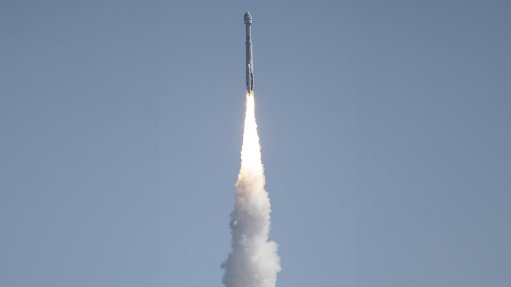
Lift-off of the Boeing Starliner capsule on its first crewed test flight, on top of an ULA Atlas V rocket
Photo by: Nasa
Boeing’s CST-100 Starliner space capsule successfully lifted off on its first crewed test flight at 16h52 South African time on Wednesday, and is now safely in orbit, the US National Aeronautics and Space Administration (Nasa) has confirmed. It is scheduled to dock with the International Space Station (ISS) at 18h15, South African time, on Thursday. It will remain docked with the ISS until at least June 14.
The Starliner has been developed under Nasa’s Commercial Crew Programme (CCP), and the test flight is being executed by two Nasa astronauts. They are Barry “Butch” Wilmore and Sunita “Suni” Williams. Both are veteran astronauts, both having flown two previous space missions. Both are pilots, and both are also engineers. Wilmore had previously accumulated 178 days in space, while Williams’ total was 322 days. On this test flight, Wilmore is the mission commander and Williams is the pilot.
Under the CCP, Nasa selected two companies to build and launch spacecraft to carry astronauts into low Earth orbit (allowing Nasa to focus its attention on its Orion crewed deep space vessel). Boeing was one, and SpaceX was the other. But while SpaceX has been successfully flying CCP missions to the ISS since May 2020 (the date of its crewed test flight), and is now on its eighth operational mission to the space station, the Boeing programme has been plagued by failures and lesser glitches, causing delays that have run into years. The Starliner had, for example, to undertake two uncrewed test flights, because of failures on the first one, whereas Crew Dragon needed only a single uncrewed test flight.
“Two bold Nasa astronauts are well on their way in this historic first test flight of a brand-new spacecraft,” highlighted Nasa administrator Bill Nelson. “Boeing’s Starliner marks a new chapter of American exploration. Human spaceflight is a daring task – but that’s why it’s worth doing. It’s an exciting time for Nasa, our commercial partners, and the future of exploration. Go Starliner. Go Butch and Suni!”
“This crew flight test represents the beginning of a new era of space exploration as we watch astronauts Wilmore and Williams put Boeing’s Starliner through its paces on the way to the [ISS],” affirmed Boeing Defence, Space and Security president and CEO Ted Colbert. “This is a great start. We look forward to getting the astronauts safely to the space station and back home.”
This successful launch of the spacecraft followed two previous attempts that both had to be scrubbed. In addition to its crew, the Starliner is carrying 345 kg of cargo to the ISS.
The Starliner was launched from Space Launch Complex-41 at the Cape Canaveral (US) Space Force Station, in the US state of Florida, on a United Launch Alliance (ULA) Atlas V rocket. The Atlas V is composed of a Common Core Booster first stage and a Centaur second stage. This launch was also a first for ULA, as it was the maiden launch of a crewed mission by one of their rockets.